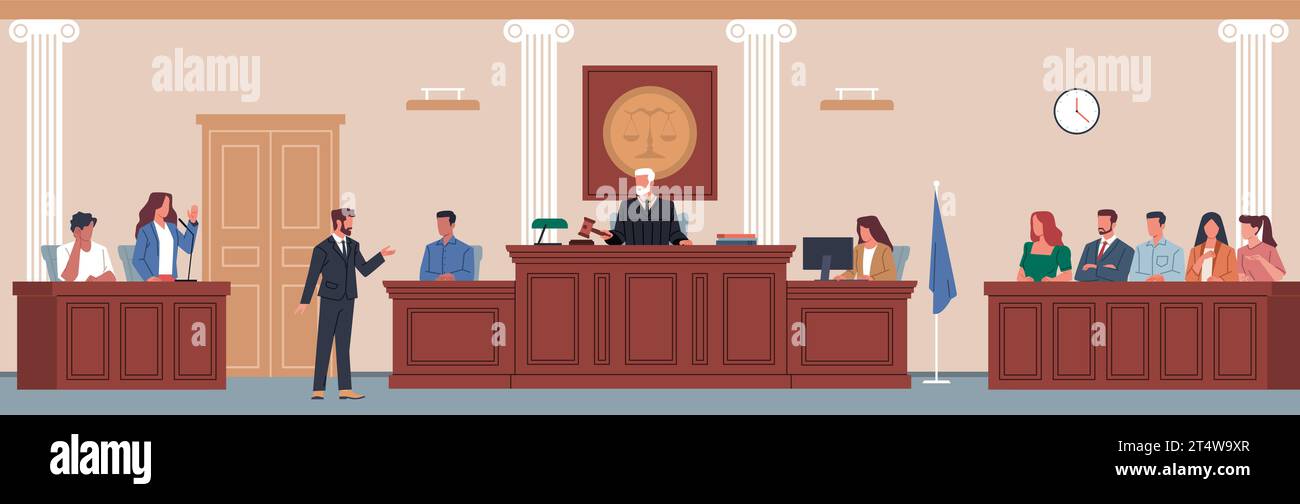Trial Presentation Comprehensive Services for Challenging Court Cases
Astound the Court: Necessary Elements of a Powerful Trial Presentation
In the realm of legal advocacy, the capacity to mesmerize a court is critical to the outcome of a trial (trial presentation). Crucial elements such as recognizing the audience, crafting an engaging narrative, and grasping spoken and non-verbal communication are crucial components of an efficient discussion. In addition, the critical usage of visual help can dramatically enhance understanding and retention of key arguments. As these variables link, they form a natural technique that not only informs however likewise involves jurors on multiple levels. What details techniques can truly transform a standard presentation right into an unforgettable experience for the court?

Comprehending Your Target Market
Comprehending your audience is an essential aspect of efficient test presentation. An effective discussion rests on the ability to understand the demographics, values, and proneness of jurors. This comprehension educates how debates are framed, proof exists, and sob stories are crafted, making sure that the message resonates with the jurors on a personal degree.
Study indicates that jurors come from diverse backgrounds and may have differing levels of understanding regarding legal procedures. Furthermore, understanding the jurors' possible biases and life experiences permits the trial speaker to expect arguments and address issues proactively.
Reliable trial presentation likewise includes observing jurors' reactions during the procedures. Engaging with jurors as people instead than a cumulative device is vital in cultivating a solid link in the courtroom.

Crafting a Compelling Narrative
Crafting an engaging narrative is necessary in leading jurors with the complexities of a case. A well-structured narrative not just streamlines detailed lawful ideas but also engages jurors on a psychological level, making the info a lot more relatable and remarkable.
This message needs to reverberate with the jurors' values and experiences, promoting a link that transcends plain facts. This chronological strategy can help jurors follow the progression of occasions, emphasizing cause and impact.
Integrating human elements-- such as personal stories or narratives-- can better improve the story's effect. These components evoke empathy, permitting jurors to envision the repercussions of the case on actual lives. Additionally, employing a consistent theme throughout the presentation strengthens the primary disagreement, making it easier for jurors to preserve crucial points.
Eventually, an engaging story changes a trial presentation from a mere address of realities right into a persuasive tale that astounds the court, urging them to ponder with both reason and emotion.
Using Visual Help
Incorporating visual aids right into a test presentation can considerably boost jurors' understanding and retention of info. Aesthetic materials such as graphes, diagrams, photos, and video clips can change complicated lawful principles and proof right into easily absorbable layouts. By involving numerous senses, these help allow jurors to imagine the situation's crucial elements, making it much easier for them to comply with along and comprehend detailed details.
Additionally, well-designed visual aids can highlight crucial points and emphasize connections in between various items view of proof. For circumstances, timelines can successfully illustrate the sequence of events, while annotated images can make clear particular details appropriate to the instance. This not just help in understanding however additionally enhances the story provided by the lawyer.
It is essential, however, to ensure that visual help matter, clear, and skillfully offered. Excessively intricate or cluttered visuals may bewilder jurors and diminish the message. When used deliberately, visual aids serve to enhance the oral disagreements and boost the overall effect of the test discussion. Ultimately, effective aesthetic communication can be an effective tool in convincing jurors and assisting them get to informed final thoughts.
Understanding Verbal Communication
Reliable spoken interaction is vital in a test discussion, as it works as the main methods where lawyers convey their arguments and get in touch with jurors. Mastering this skill involves clearness, persuasion, and involvement. Lawyers have to express their factors plainly and briefly, preventing lawful lingo that might confuse jurors. Simplicity in language fosters understanding and aids jurors realize intricate concerns offered throughout the test.
Moreover, tone and pacing substantially effect how messages are obtained. A certain tone shares authority, while suitable pacing allows jurors to soak up info without feeling bewildered. Attorneys should additionally vary their vocal inflections to stress bottom lines and keep jurors' rate of interest throughout the presentation.
In addition, the organization of spoken arguments is essential. Structuring the top article narrative practically and coherently assists jurors follow the lawyer's logic, making it less complicated visit for them to maintain vital info. Utilizing persuasive methods, such as narration, can also boost the psychological resonance of the disagreements offered, thus producing an extra profound connection with jurors.
Eventually, mastering spoken communication not only reinforces an attorney's instance however additionally fosters trust fund and rapport with the jury, significantly improving the opportunities of a beneficial decision.

Involving With Body Movement
Nonverbal interaction plays an essential duty in test discussions, usually communicating messages that words alone can not express. Body movement, encompassing motions, position, faces, and eye get in touch with, substantially affects how jurors view the trustworthiness and sincerity of the presenter. A certain stance, with shoulders back and an open stance, can impart count on, while closed-off body movement may suggest defensiveness or unpredictability.

Faces must reflect the feelings connected with the instance, reinforcing the story being presented. For example, a sincere expression throughout a poignant moment can evoke empathy and reinforce the emotional allure. Eventually, understanding body language is vital for reliable test presentations, as it enhances verbal communication and develops a compelling existence that resonates with the court.
Conclusion
In final thought, astounding the jury requires a strategic technique that incorporates understanding the audience, crafting a compelling story, making use of visual help, mastering verbal interaction, and involving via body language. Each element plays a critical role in creating an effective test discussion that resonates with jurors on both emotional and intellectual levels (trial presentation). By integrating these elements successfully, lawful specialists can significantly enhance their capability to convince and influence jury decision-making